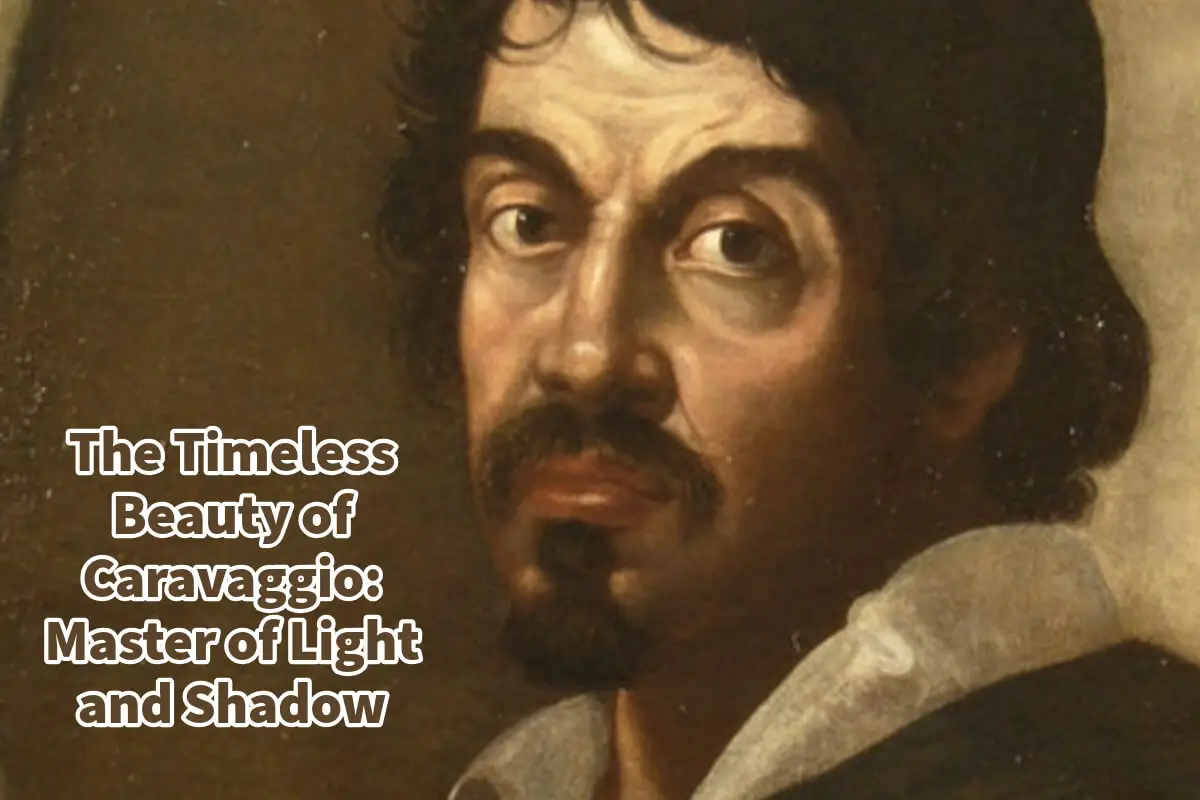Michelangelo Merisi da Caravaggio, known simply as Caravaggio, stands as one of the most influential and enigmatic artists in the history of Western art.
Caravaggio’s innovative use of light and shadow, known as chiaroscuro, set him apart from his contemporaries and paved the way for future generations of artists. His powerful, often controversial works were marked by dramatic realism and emotional intensity that continues to captivate art lovers and inspire creators to this day. Read on as we will explore how Caravaggio revolutionized art through his mastery of light and shadow, cementing a legacy that remains vibrant more than 400 years after his time.
Table of Contents
- The Early Life and Artistic Beginnings of Caravaggio
- The Birth of Chiaroscuro: Caravaggio’s Signature Technique
- Iconic Works That Showcase His Mastery
- The Controversial Nature of Caravaggio’s Art
- The Legacy of Caravaggio
- Caravaggio’s Enduring Appeal
- The Timeless Beauty of Caravaggio
- Related Questions
The Early Life and Artistic Beginnings of Caravaggio
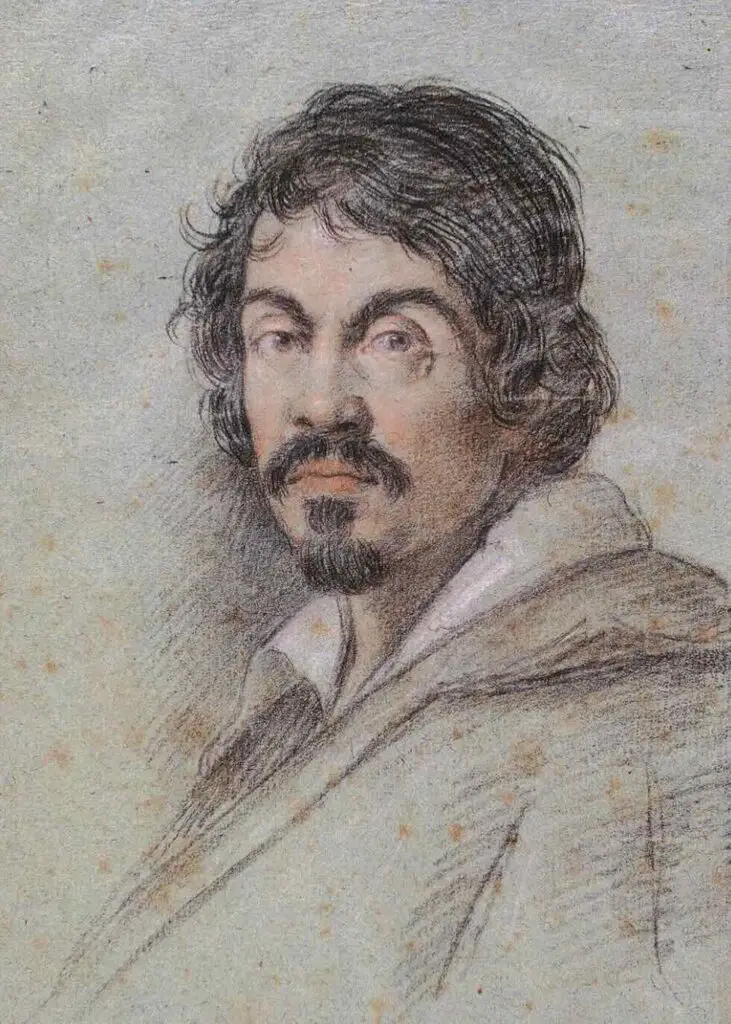
Caravaggio was born in 1571 in the town of Caravaggio, Italy. He spent his formative years learning his craft in Milan and later in Rome, where he began to establish himself as an artist with a unique voice. Unlike many of his contemporaries, who adhered to the ideals of the Renaissance, which emphasized idealized beauty and harmony, Caravaggio took a different approach.
Breaking Away from Tradition
During the late Renaissance and early Baroque periods, artists were deeply influenced by classical forms and mythological themes. However, Caravaggio brought a stark realism to his work that mirrored life’s raw and often grim realities.
He painted directly from live models, capturing their imperfections and humanity. This commitment to realism set the stage for his later masterpieces and showcased his emerging signature style: using light not just for illumination but as a powerful storytelling device.
The Influence of Rome on His Style
During Caravaggio’s time, Rome was a hub of artistic patronage, fueled by the Catholic Church’s Counter-Reformation, which sought art that could evoke deep emotional responses and reinforce faith.
Caravaggio’s early works were marked by exploring religious themes, portrayed in a new and shocking manner. His vivid, lifelike characters often appeared as ordinary people, depicted in gritty realism, drawing admiration and criticism.
The Birth of Chiaroscuro: Caravaggio’s Signature Technique
Caravaggio’s unique approach to painting was centered around his mastery of chiaroscuro. This technique uses strong contrasts between light and dark to achieve a sense of volume and three-dimensionality.
While the concept of chiaroscuro was not new—artists like Leonardo da Vinci had used it—Caravaggio elevated it to an unprecedented level.
The Power of Light in Caravaggio’s Work
Caravaggio’s use of light was not just a visual choice but a narrative one. His compositions often featured a single, intense source of light that dramatically illuminated the scene’s focal point, casting deep shadows and creating a sense of immediacy.
This technique can be seen in works like The Calling of Saint Matthew, where a beam of light directs the viewer’s attention to the moment of divine revelation, emphasizing the sacred amidst the mundane.
Symbolism and Drama
The interplay of light and shadow in Caravaggio’s work created more than visual drama—it symbolized the tension between the sacred and the profane, good and evil, salvation and sin.
This symbolic use of light resonated deeply with the themes of the Counter-Reformation, which sought to portray spiritual struggle and redemption.
Iconic Works That Showcase His Mastery
Several of Caravaggio’s paintings stand out as quintessential examples of his revolutionary style. Each illustrates how he utilized light and shadow to breathe life into his art.
The Calling of Saint Matthew (1599-1600)
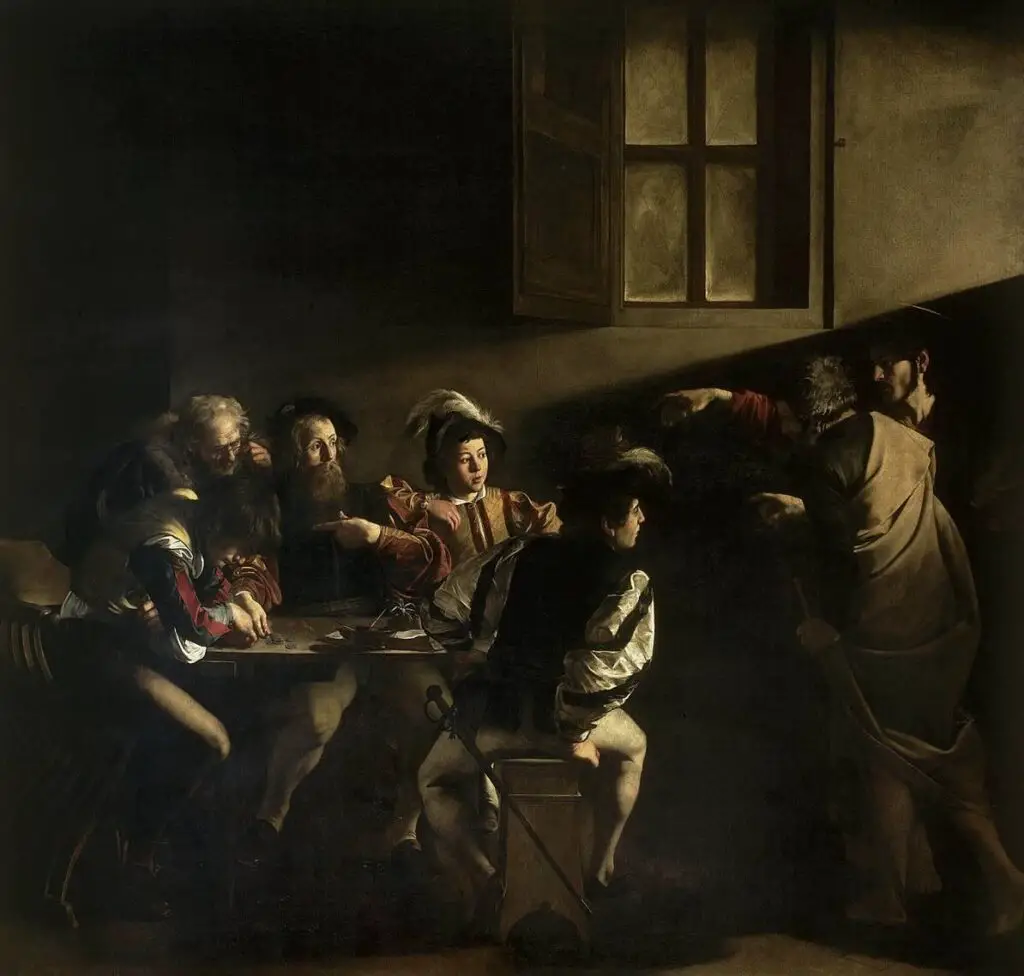
Perhaps one of Caravaggio’s most famous works, The Calling of Saint Matthew, embodies his mastery of chiaroscuro. The painting depicts the moment Jesus calls Matthew, a tax collector, to follow him.
The stark contrast between the dark background and the brilliant shaft of light that illuminates Jesus’ outstretched hand and Matthew’s surprised expression creates a powerful focal point. The light draws the viewer’s eye and serves as a metaphor for divine intervention.
Judith Beheading Holofernes (1598-1599)
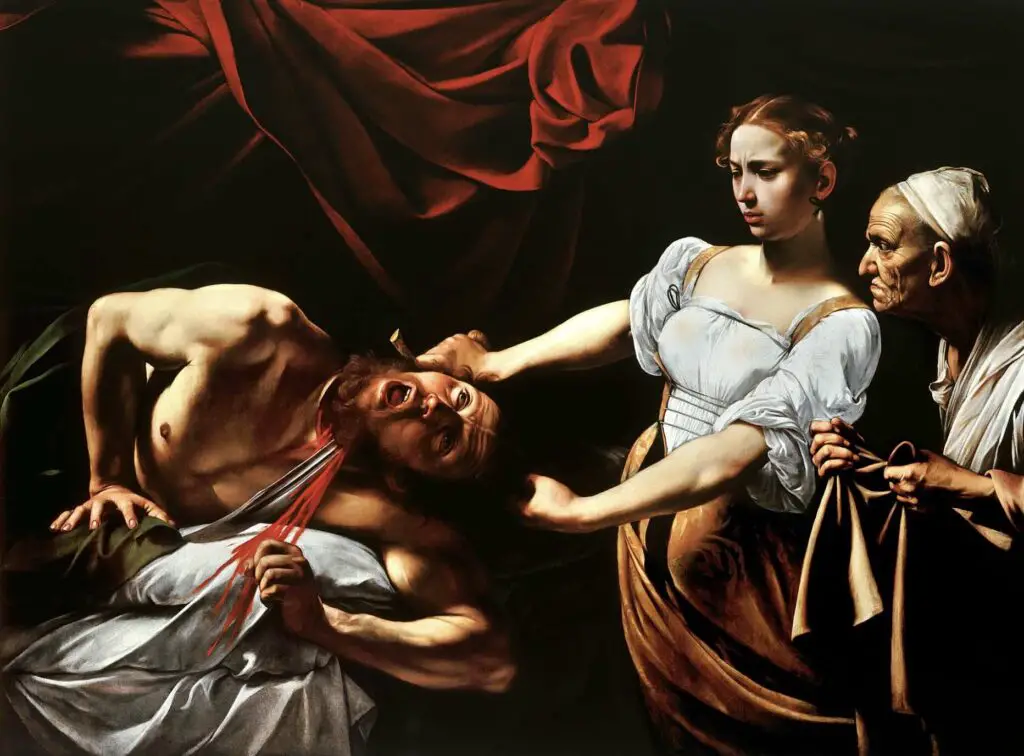
This painting captures the gruesome yet dramatic moment when Judith decapitates Holofernes. Caravaggio’s use of shadow intensifies the violence of the act, while the spotlight focuses on Judith’s determined expression and the victim’s contorted face.
The contrast between the light on Judith and the shadowed, chaotic background underscores the scene’s tension and moral complexity.
The Supper at Emmaus (1601)
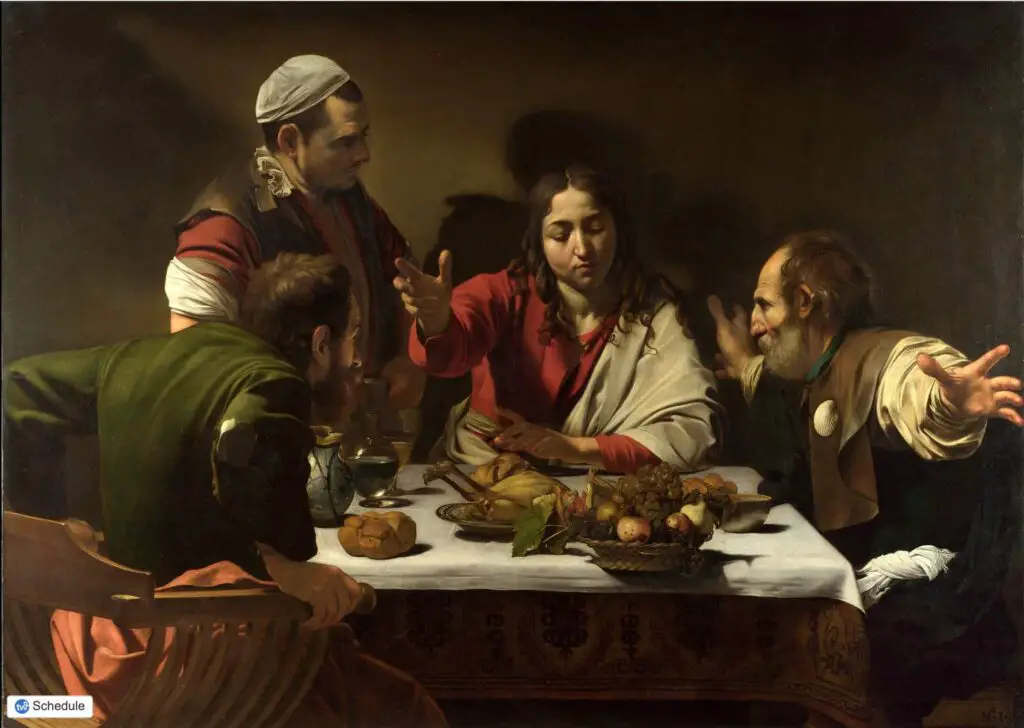
In The Supper at Emmaus, Caravaggio portrays the moment the resurrected Christ reveals himself to two of his disciples. The dramatic lighting highlights Christ’s serene face and the disciples’ astonished gestures, creating a palpable sense of revelation and wonder.
The realism of the figures, combined with the deep shadows, lends a dynamic quality that draws the viewer into the sacred event.
The Controversial Nature of Caravaggio’s Art
Caravaggio’s unvarnished depictions of religious figures with familiar, even rough, appearances were often deemed scandalous by the religious authorities of his time. His commitment to realism sometimes clashed with the more sanitized, idealized images popular in religious art.
For instance, his Death of the Virgin was rejected by the Carmelites because Mary was portrayed not with divine serenity but with the stark reality of death, her body appearing heavy and lifeless.
The Humanization of the Sacred
This humanization of sacred figures made Caravaggio’s works deeply relatable to the average person. Saints and biblical heroes were not depicted as untouchable figures of perfection but as humans capable of doubt, struggle, and suffering.
This aspect of his work resonated with the broader aims of the Counter-Reformation, which sought to make the Bible’s stories more accessible and emotionally engaging for the masses.
Caravaggio’s Personal Life and Art
The artist’s own life was as turbulent and intense as his paintings. Known for his volatile temper, Caravaggio was frequently involved in brawls and even fled Rome after being implicated in a murder.
This tumultuous life infused his art with an authenticity that resonated with the drama and raw emotion depicted in his work. His paintings are as much a reflection of his inner turmoil as they are of his genius.
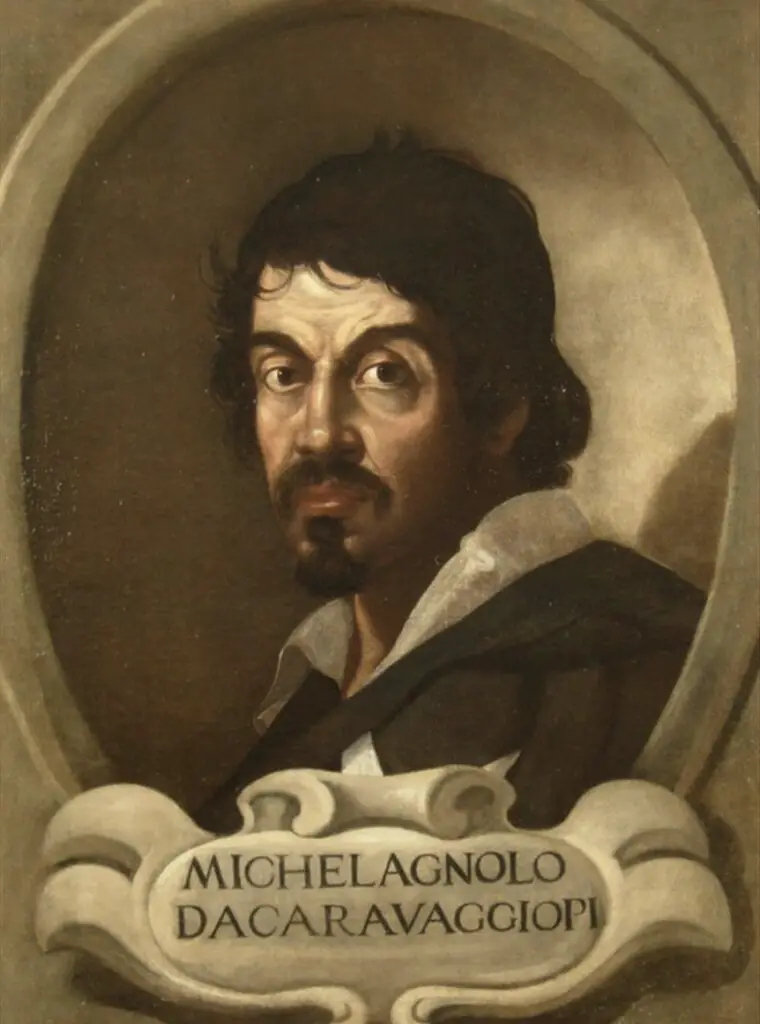
The Legacy of Caravaggio
Caravaggio’s influence on the art world extended far beyond his lifetime. His dramatic use of light and shadow set a precedent that was emulated by numerous artists, giving rise to the Baroque style, characterized by its emphasis on movement, contrast, and emotional depth.
Influencing the Baroque Movement
Caravaggio’s approach to composition and bold realism profoundly impacted artists like Peter Paul Rubens, Rembrandt, and Diego Velázquez. These artists adopted and adapted his use of chiaroscuro, creating their masterpieces infused with the drama and intensity Caravaggio pioneered. Rembrandt, in particular, is often noted for incorporating Caravaggio’s stark contrasts to highlight human emotion in his work.
Modern Artists and Caravaggio’s Reach
Even today, Caravaggio’s legacy can be seen in contemporary artists who seek to explore the boundaries between light and dark, realism and abstraction.
Photographers and filmmakers, such as Martin Scorsese, have cited Caravaggio as an inspiration for their use of lighting to create mood and tell stories. The use of strong lighting and shadow to evoke emotional responses continues to resonate, demonstrating Caravaggio’s timeless relevance.
Caravaggio’s Enduring Appeal
What makes Caravaggio’s work timeless is not just his technique but the universal themes of humanity that permeate his paintings. His ability to convey raw emotion and the moral complexities of life ensures that his art remains compelling and relatable across generations.
The Emotional Connection
Caravaggio’s paintings speak to the fundamental human experiences of love, betrayal, faith, and redemption. The raw emotion captured in the faces and gestures of his figures invites viewers to connect on a deeply personal level. This emotional engagement makes his art feel as relevant today as it was in the 16th and 17th centuries.
The Modern Viewer’s Perspective
For the modern viewer, Caravaggio’s work provides a lens through which to examine the struggles of life and the search for meaning. His use of ordinary people as models for saints and biblical figures underscores the notion that the divine and the ordinary are inextricably linked. This concept continues to resonate with contemporary audiences who seek authenticity and depth in art.
The Timeless Beauty of Caravaggio
Caravaggio was more than just an artist; he was a revolutionary whose fearless approach to art changed the trajectory of Western painting. His masterful use of chiaroscuro brought unparalleled drama and realism to his works, making him a master of light and shadow. Despite the controversies surrounding him, his work transcends time, continuing to inspire artists and captivate viewers with its profound emotional resonance.
Today, standing before a Caravaggio masterpiece, one is struck not just by the interplay of light and shadow but by the stories they tell and the truths they reveal about the human condition. Caravaggio’s legacy is one of passion, realism, and the timeless beauty of art that dares to delve into the depths of human experience.
Anita Louise Art is dedicated to art education, great artists, and inspiring others to find and create their art. We love art that uplifts and inspires. #ArtToMakeYouSmile! #ArtToMakeYouHappy!
If you want to see any of my art, you can find out more by clicking here. If you are interested in what inspires me and my paintings, you can discover more by clicking here.
We have a free newsletter and would love you to be part of our community; you can subscribe to the newsletter by clicking here. If you have any questions, I would be happy to talk to you anytime. You can reach me, Anita, by clicking here.
Subscribe to our Anita Louise Art YouTube Channel with great videos and information by clicking here.
Join us for our podcast “5 Minutes With Art.” Spend just 5 minutes a week with us to discover and learn about great art and artists. You can find out more about our podcast by clicking here.
Related Questions
Vincent Van Gogh – Wheat Field With Cypresses – 1889
Among the subjects he cherished painting, cypress trees held a special place. One such masterpiece is “Wheatfield with Cypresses.” During this period of his artistic journey, Van Gogh’s fascination with these trees was palpable. As we delve deeper into the realm of cypress trees and Van Gogh’s paintings, we uncover a captivating narrative that adds to the rich tapestry of his artistic exploration.
By clicking here, you can learn more by reading Vincent Van Gogh – Wheat Field With Cypresses – 1889.
Vincent Van Gogh’s Orchard In Blossom – 1889
Some of my favorite paintings he produced are his Blossom paintings, including The Orchard in Blossom. Read on as we explore the extraordinary masterpiece “Orchard in Blossom” and unveil the enduring allure of Van Gogh’s artistic legacy, which continues to captivate audiences across the globe.
By clicking here, you can learn more by reading Vincent Van Gogh’s Orchard In Blossom – 1889.
Vincent Van Gogh, The Sowers – 1888
Vincent Van Gogh’s “The Sower,” created during the autumn of 1888, stands as a captivating masterpiece that provides insight into the artist’s enduring fascination with the subject of sowers. This iconic artwork transcends the mere portrayal of a rural scene, profoundly exploring emotion, imagination, and the transformative potency of color.
By clicking here, you can learn more by reading Vincent Van Gogh, The Sowers – 1888.

